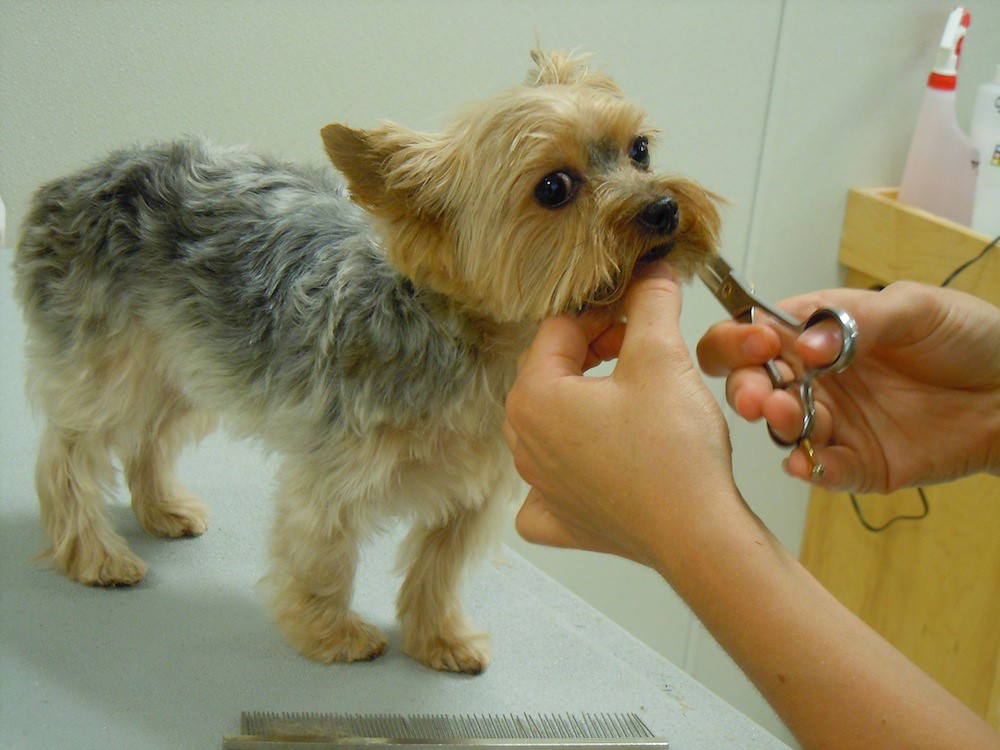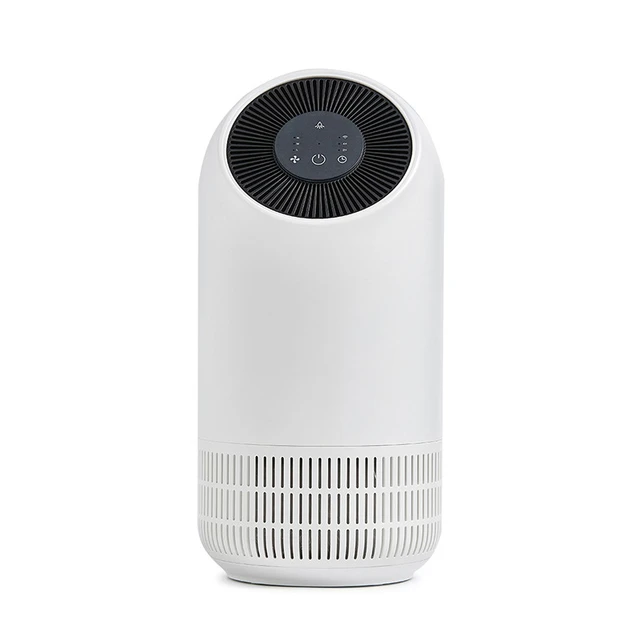As a dog groomer, one of the essential skills you must master is scissoring. An excellent dog grooming scissoring technique means that the scissor is used lightly by the dog groomer and is not forced to cut. A dog groomer’s thumb must never be allowed to protrude through the thumb hole. If this happens, the pressure on the thumb can bend at the first knuckle and pull the blade back towards the palm. As a result, this places a significant amount of pressure on blades as they pass each other and the friction created at this point, causes the blades or teeth to lock or catch. In this comprehensive guide, we will explore some aspects of dog grooming scissoring, providing you with valuable tips and techniques to enhance your scissoring abilities. So, let’s grab our scissors and embark on this scissoring adventure!
 Preparing the Dog for Scissoring
Preparing the Dog for Scissoring
Before you start scissoring, it’s crucial to prepare the dog properly. We’ll guide you through the necessary steps to ensure the dog is clean, properly brushed, and free of any mats or tangles. We’ll discuss how to use combing and brushing techniques to prepare the coat for scissoring, allowing for smoother and more precise scissoring. By properly preparing the dog, you’ll create a solid canvas for your scissoring masterpiece.
How to clean and keep dog grooming scissors in good condition
Keeping your dog grooming scissors clean is one of the most important things you can do to ensure long working scissor life. Dirt, moisture, hair and chemicals can cause nicks or corrosion to your scissor blades, severely impacting their effectiveness.
You should always clean your scissors between grooms for hygiene reasons and to keep them at their best. Start by brushing away loose hair with a soft brush or damp cloth before spraying the blades with a disinfectant spray. Then, thoroughly dry the blades with a soft cloth or chamois. Always double check your scissors are compatible with certain sprays and chemicals before using them on your scissors to prevent any corrosion or rust from occurring.
At the end of each grooming day, it’s time to clean your professional dog grooming scissors thoroughly. Start by removing loose hair from the blades, as mentioned before, taking time to ensure that hair and moisture are removed from the tension screw. Neglecting this part of your scissors causes clogging and, if left alone, can cause the tension screw to rust and become faulty.
When cleaning your scissors, it’s important not to leave them soaking overnight, as this can damage the blades and cause them to rust. Using a good and safe disinfectant, such as Barbicide, is all you need to clean your scissors without damaging them. Always ensure that your scissors are compatible with Barbicide and that you dry them fully after cleaning, paying special attention to the blades and the tension screw.
Scissor Care and Maintenance Tips
Scissors come in all shapes and sizes, and with the correct care and maintenance they should last you a long time.
- Clean your scissors with a soft cloth between every groom! If the blades are covered in dirt, moisture, hair and chemicals it can lead to corrosion, nicks or damage to the blade.
- Regularly oil your scissors. Open the scissors and apply a small amount of oil above and below the adjustment screw on both sides.
- Get your scissors professionally sharpened periodically, normally between 3-6 months or as required (excluding accidental damage).
- Check the tension of your scissors throughout the day and adjust them accordingly.
- Do not drop or toss the scissors in a draw for storage. Always keep them in a case, carrier or
- pouch whenever possible to prevent damage.
 How to alter the tension of scissors?
How to alter the tension of scissors?
Professional dog grooming scissors usually come with information on adjusting their tension.
Correct scissor tension helps guarantee the longevity of your scissors and prevents hand fatigue. Setting the tension to the appropriate level will prevent your scissor’s blades from locking and catching against each other, allowing them to perform at their best.
Most dog grooming scissors come with adjustable hand tension or a tension key, so unlike sharpening or aligning, you can easily adjust yours without needing help from a professional. Here’s how to adjust the tension of your scissors:
Start by testing the tension. Hold your scissors by the thumb ring with your left hand with the scissors facing upright in a 12 o’clock position.
With your right hand, take the finger ring and open the blades to a 45-degree angle. Let go of the ring and let the scissors close by themselves.
When the blades close, there should be approximately 0.5 inches between them, and if there’s any more or less, the scissors might need tensioning.
To tighten the scissors, move the tension screw a fraction clockwise (or anti-clockwise, depending on the model of your scissors). To loosen the scissors, work in the opposite direction, testing and checking after each adjustment to see how they feel.
How to keep my grooming scissors sharp
It’s recommended that you get your scissors professionally sharpened every three to six months to achieve the best groom for your clients.
The frequency that your scissors require sharpening will depend on how many dogs you groom daily and the types of dog coats you’re grooming. If you find that your scissors are catching, aren’t cutting easily or aren’t giving as good a quality finish, as usual, these can all be signs that they need sharpening or aligning.
Never try to sharpen your scissors at home or in the salon, as this could damage your blades or even cause them to break. Always take your scissors to a professional sharpener who can sharpen and realign them to bring them back to their best.
To keep your blades sharper for longer, only ever use your scissors for dog grooming. If you can avoid it, don’t cut through large chunks of dog hair or dirty hair, as this can overwork and blunt the blades. Finally, be mindful not to drop your scissors as this can damage their blades and alignment.

If you are finding that you need to apply more pressure on your dog groomoing scissors to cut, then I would advise that it is time to have your collection sharpened and reset. Keeping your scissors and clipper blades sharp and in good working order, is a vital part of being a dog groomer. It is essential for you to have your scissors sharpened at least every two months and after any grooming competition, exam or even large dog trims which may have required a lot of scissor work. Having a healthy selection of scissors is also a great idea as it enables you to continue doing all your hard work while some of your scissors are in for a pampering.
Lastly, don’t forget to have fun with scissoring! It’s an opportunity to showcase your creativity and artistic flair. Experiment with different scissoring styles and techniques, and don’t be afraid to add your own personal touch. Each groomed dog can be a unique masterpiece that reflects your passion and dedication.
So, grab your scissors, embrace the seven aspects of dog grooming scissoring, and embark on a scissoring journey filled with creativity, precision, and joy. With practice, patience, and a relaxed mindset, you’ll become a master at scissoring, delighting both your furry clients and their owners. Happy grooming!

